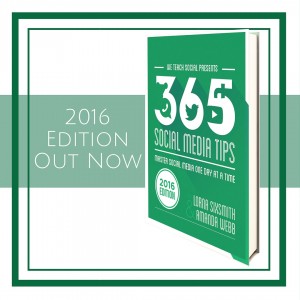‘Could you do a post about the value of back links and how to get them?’ I was asked some time ago by Móna of Wise Words. ‘Of course I will’, I replied and put it on my to do list where it sat for some time! As it happened, Beatrice of Sage Ireland included lots of information on the building of links at the KLCK bloggers network talk last Monday night which provided me with lots of information to include here! Thanks Bea ![]()
What are Links?
Links are hyperlinks that can be clicked on and the user is then brought to the new page (the link). They are valuable as each link you receive from another website could be viewed as another vote in the eyes of any of the search engines. Some votes could be worth very little and some could carry significant weight if they come from sites that are viewed as reputable, high quality and a good traffic source by the search engine.
The aim of each website is to gather as many links (especially high quality ones) as possible as this really benefits your search engine optimisation and hence, your page rank (gets you closer to or onto the first page).
What are inbound / back links?
Inbound or back links are links to your website from another website. The value of that link will depend on many factors such as the page ranking of that website; its subject relevance to your topic; the page it comes from; if it is simply listed in the blogroll or within the first paragraph of a related topic and highly visited blog post (the first paragraph will carry more weight); and if the link is simply included within the word ‘here’ (not so good) or if it is described with relevant text or a keyword phrase e.g. ‘expert opinion on seo’.
Backlinks are only worth their salt if they come from related sites. You may receive numerous emails from companies promising to improve your SEO by increasing the number of inbound links to your site but unless they are creating them on related sites, they could do more harm than good.
Links from tweets will not count unfortunately unless it is a tweet from someone with an immense number of followers and who carries serious influence. I guess I’m thinking of Stephen Fry who has been known to cause many websites to crash as they couldn’t cope with the amount of traffic he sent their way! However, it is still worth doing as you will get more readership and some people may then link to your content from their blog or website which would count.
Many people think that they are creating inbound links to their own website by commenting on other blogs. However, Google places an automatic ‘no follow’ clause on these links so they won’t actually count as backlinks. Once again, it is worth doing as other blog writers and commentators may visit your site and it will help you to become part of a community so all is not lost.
How to increase your inbound links:
- write guest posts for other blogs (the quality of that blog in terms of traffic and content will determine the quality of the link you receive)
- write content for (free or paid) directories – but it must be original and remember, the quality of your material does matter.
- Ask your suppliers/customers to list you on their website
- Ask complimentary businesses to exchange links e.g. a florist could exchange links with a bridal shop
- Writing excellent blog posts with original content may lead others to quote or refer to you in their writing
- Ask your local chamber of commerce or other business networks to place a link on their website.
- List your blog on blog directories such as Technorati
- Have an occasional competition on your blog – other blogs may link to it.
What are outbound links?
Outbound links are the links you provide to other websites or blogs. Again, you need to ensure that they are good quality websites and that the subject matter is related to yours. Beatrice recommended that you include no more than three outbound links in any one blog post.
By linking to other sites, you are showing that your site is engaging with other high quality sites of similar themes.
What is cross linking?
Strictly speaking, cross linking simply refers to the exchange of links between two sites but most people understand cross linking to be linking within a site (or within sites that are all owned by you). For example, if you are writing about one of your products and you create a link to it – that is referred to as a cross link. You should try to use a highly searched keyword for the hyperlink.
Have I left anything out?- do let me know in the comments below if I did. Is there anything you don’t understand? Ask us below and we’ll do our best to answer.
And if you liked it – do send us some link love ![]()
We’re planning on running this ‘How to Blog’ series every Friday so if you do have a question about blogging, do please leave it in the comment section or send us an email and we will endeavour to answer it in an upcoming blog post.










Pingback: How To Blog: Building Links and Connections « Write On Track